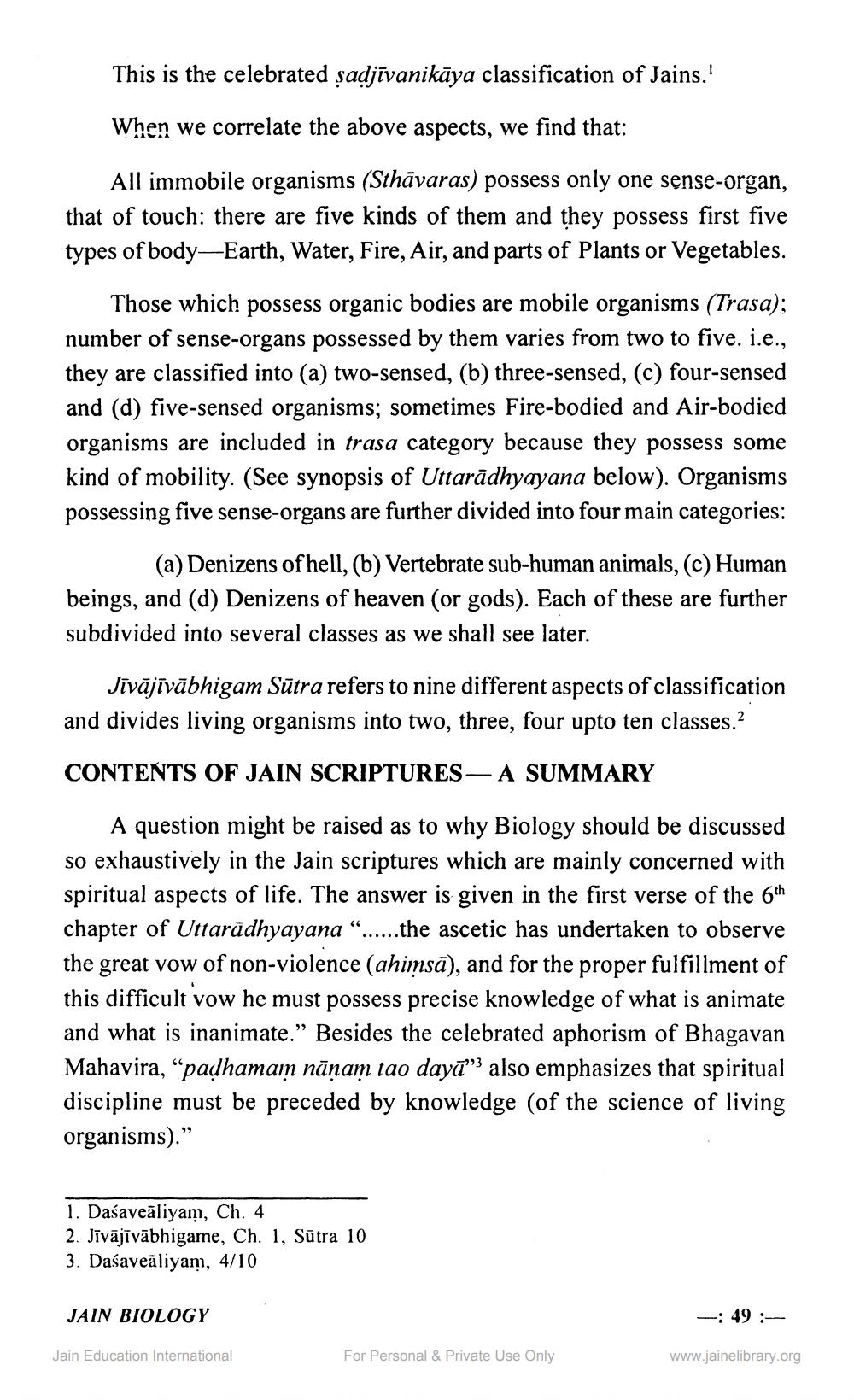________________
This is the celebrated ṣaḍjīvanikāya classification of Jains.'
When we correlate the above aspects, we find that:
All immobile organisms (Sthāvaras) possess only one sense-organ, that of touch: there are five kinds of them and they possess first five types of body-Earth, Water, Fire, Air, and parts of Plants or Vegetables.
Those which possess organic bodies are mobile organisms (Trasa); number of sense-organs possessed by them varies from two to five. i.e., they are classified into (a) two-sensed, (b) three-sensed, (c) four-sensed and (d) five-sensed organisms; sometimes Fire-bodied and Air-bodied organisms are included in trasa category because they possess some kind of mobility. (See synopsis of Uttaradhyayana below). Organisms possessing five sense-organs are further divided into four main categories:
(a) Denizens of hell, (b) Vertebrate sub-human animals, (c) Human beings, and (d) Denizens of heaven (or gods). Each of these are further subdivided into several classes as we shall see later.
Jīvājīvābhigam Sūtra refers to nine different aspects of classification and divides living organisms into two, three, four upto ten classes.2 CONTENTS OF JAIN SCRIPTURES-A SUMMARY
A question might be raised as to why Biology should be discussed so exhaustively in the Jain scriptures which are mainly concerned with spiritual aspects of life. The answer is given in the first verse of the 6th chapter of Uttarādhyayana .the ascetic has undertaken to observe the great vow of non-violence (ahimsa), and for the proper fulfillment of this difficult vow he must possess precise knowledge of what is animate and what is inanimate." Besides the celebrated aphorism of Bhagavan Mahavira, "padhamam nāṇam tao daya" also emphasizes that spiritual discipline must be preceded by knowledge (of the science of living organisms)."
1. Daśaveāliyam, Ch. 4
2. Jīvājīvābhigame, Ch. 1, Sūtra 10
3. Dasaveāliyam, 4/10
JAIN BIOLOGY
66
Jain Education International
For Personal & Private Use Only
-: 49:
www.jainelibrary.org




